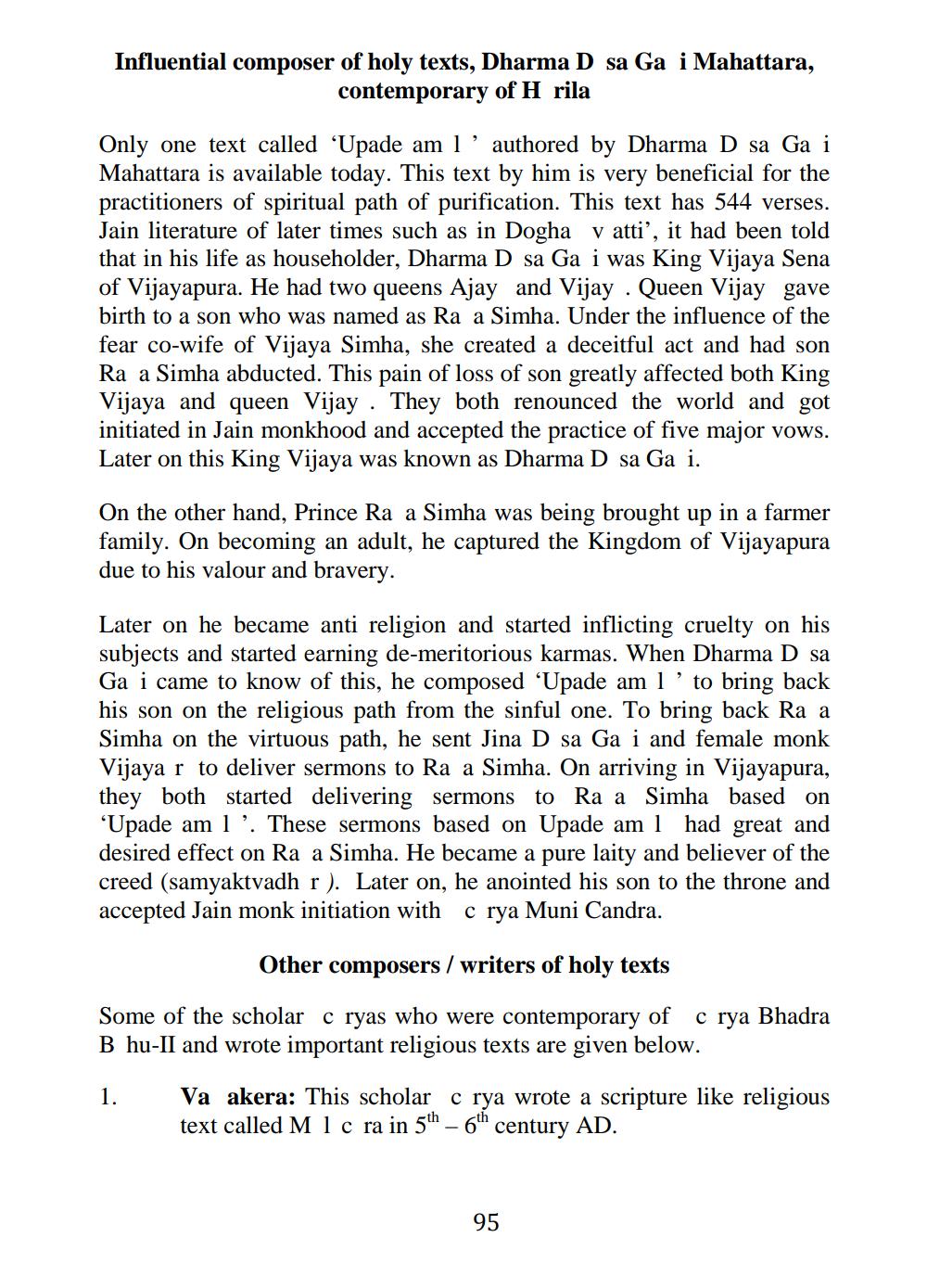________________
Influential composer of holy texts, Dharma D sa Ga i Mahattara, contemporary of H rila
Only one text called 'Upade am 1' authored by Dharma D sa Ga i Mahattara is available today. This text by him is very beneficial for the practitioners of spiritual path of purification. This text has 544 verses. Jain literature of later times such as in Dogha v atti', it had been told that in his life as householder, Dharma D sa Ga i was King Vijaya Sena of Vijayapura. He had two queens Ajay and Vijay. Queen Vijay gave birth to a son who was named as Ra a Simha. Under the influence of the fear co-wife of Vijaya Simha, she created a deceitful act and had son Ra a Simha abducted. This pain of loss of son greatly affected both King Vijaya and queen Vijay. They both renounced the world and got initiated in Jain monkhood and accepted the practice of five major vows. Later on this King Vijaya was known as Dharma D sa Ga i.
On the other hand, Prince Ra a Simha was being brought up in a farmer family. On becoming an adult, he captured the Kingdom of Vijayapura due to his valour and bravery.
Later on he became anti religion and started inflicting cruelty on his subjects and started earning de-meritorious karmas. When Dharma D sa Ga i came to know of this, he composed 'Upade am 1' to bring back his son on the religious path from the sinful one. To bring back Ra a Simha on the virtuous path, he sent Jina D sa Ga i and female monk Vijaya r to deliver sermons to Ra a Simha. On arriving in Vijayapura, they both started delivering sermons to Ra a Simha based on 'Upade am 1'. These sermons based on Upade am 1 had great and desired effect on Ra a Simha. He became a pure laity and believer of the creed (samyaktvadh r). Later on, he anointed his son to the throne and accepted Jain monk initiation with crya Muni Candra.
Other composers / writers of holy texts
Some of the scholar c ryas who were contemporary of B hu-II and wrote important religious texts are given below.
1.
c rya Bhadra
Va akera: This scholar c rya wrote a scripture like religious text called M 1 c ra in 5th-6th century AD.
95




